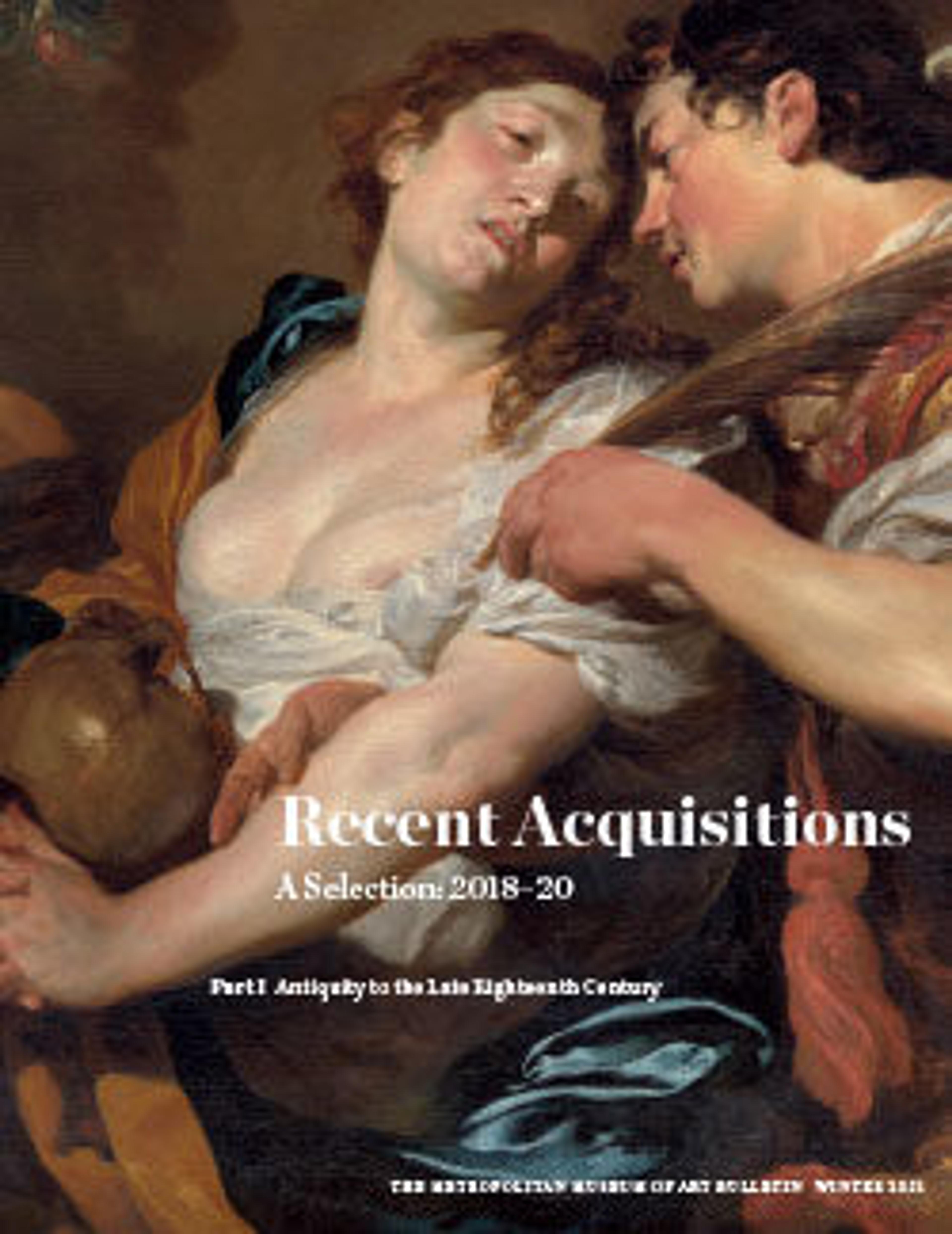Cosmetic Box (Tebako) with Chrysanthemum Flowers
During the Nara (710–784) and Heian (794–1185) periods, when the most important Shinto shrines were created in Japan, the court nobility offered sacred gifts to the deities (kami) venerated in these shrines, including mirrors, swords, precious crystals and cosmetic boxes. This lacquer cosmetic box (tebako) is a rare example of the kind of precious object made as a ritual offering. The boxes were offered with the notion that the deities could beautify themselves—similarly to the courtiers who applied makeup as a ritual and as a court custom. This tradition of offering elaborately decorated lacquer cosmetic sets continued mainly through the beginning of the Momoyama period (1573–1615). These special orders were made by the best lacquer masters using the most precious materials regardless of the costs.
This 15th-century, rectangular, deep box is decorated with gold and silver chrysanthemum flowers executed in raised and flat maki-e on “pear skin” (nashiji) ground. It has two finely crafted gilded metal fittings in the shape of eight chrysanthemums arranged in a circle surrounding a larger flower in the center. The box and its two inner trays—an unusual feature—have metal rims. The trays are also embellished with gold and silver chrysanthemums executed in burnished and flat maki-e on a pear skin ground. The small cosmetic boxes and combs that would have been inside of the box since been lost. The inside is lined with an elegant brocaded silk embellished with chrysanthemums to match the lacquer decoration. Chrysanthemum flowers are a symbol of longevity and good fortune in East Asian art referring to the legend of the Chrysanthemum Boy (Kikujidō).
This 15th-century, rectangular, deep box is decorated with gold and silver chrysanthemum flowers executed in raised and flat maki-e on “pear skin” (nashiji) ground. It has two finely crafted gilded metal fittings in the shape of eight chrysanthemums arranged in a circle surrounding a larger flower in the center. The box and its two inner trays—an unusual feature—have metal rims. The trays are also embellished with gold and silver chrysanthemums executed in burnished and flat maki-e on a pear skin ground. The small cosmetic boxes and combs that would have been inside of the box since been lost. The inside is lined with an elegant brocaded silk embellished with chrysanthemums to match the lacquer decoration. Chrysanthemum flowers are a symbol of longevity and good fortune in East Asian art referring to the legend of the Chrysanthemum Boy (Kikujidō).
Artwork Details
- Title: Cosmetic Box (Tebako) with Chrysanthemum Flowers
- Period: Muromachi period (1392–1573)
- Date: first half of the 15th century
- Culture: Japan
- Medium: Lacquered wood with gold, silver takamaki-e, hiramaki-e, gold, silver foil application on nashiji ground; gilt bronze fittings
- Dimensions: H. 10 5/8 in. (27 cm); W. 13 3/4 in. (35 cm); D. 8 1/4 in. (21 cm)
- Classification: Lacquer
- Credit Line: Purchase, John and Pauline Gandel Gift and Mary Livingston Griggs and Mary Griggs Burke Foundation Fund, 2019
- Object Number: 2019.421a–d
- Curatorial Department: Asian Art
More Artwork
Research Resources
The Met provides unparalleled resources for research and welcomes an international community of students and scholars. The Met's Open Access API is where creators and researchers can connect to the The Met collection. Open Access data and public domain images are available for unrestricted commercial and noncommercial use without permission or fee.
To request images under copyright and other restrictions, please use this Image Request form.
Feedback
We continue to research and examine historical and cultural context for objects in The Met collection. If you have comments or questions about this object record, please complete and submit this form. The Museum looks forward to receiving your comments.
